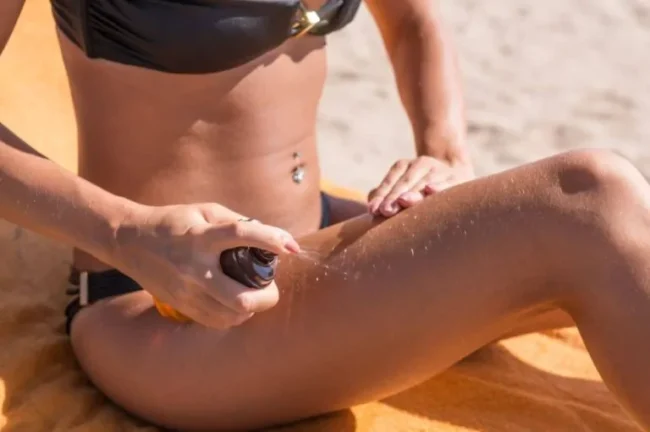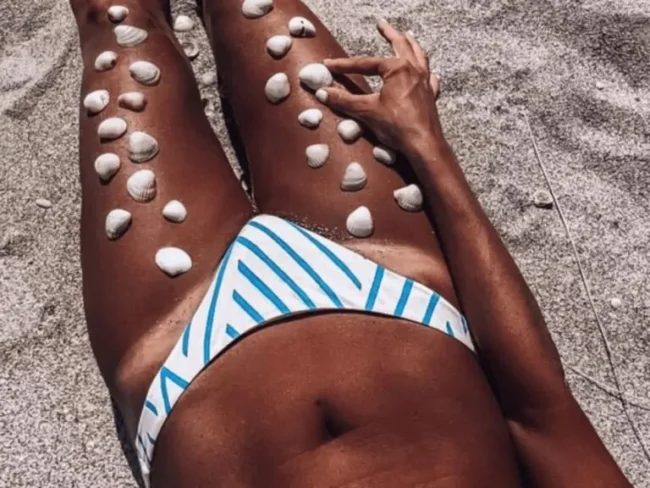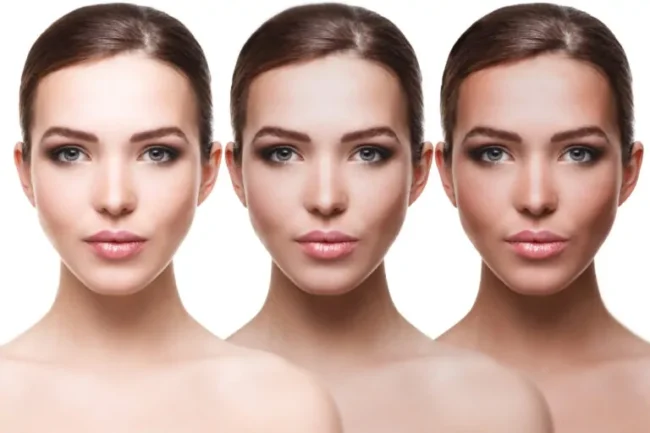The warm and sunny days of summer are upon us, and with it comes the desire for a sun-kissed glow that captures the essence of the season. Achieving a flawless and long-lasting tan not only adds a touch of allure to our appearance but also elevates our confidence, making us feel ready to embrace the joys of summer fully.
In this comprehensive guide, we will delve into the art and science of tanning, exploring key topics that will equip you with the knowledge and tools to attain a stunning tan that stands the test of time. Let’s embark on this journey together as we unravel the secrets to a sun-kissed glow while prioritizing the health and well-being of our skin.
Understanding the Science of Tanning
At the core of the tanning process lies melanin, a natural pigment produced by specialized cells called melanocytes. When our skin is exposed to sunlight, these melanocytes spring into action, creating melanin as a protective response to absorb harmful UV rays.
The two main types of UV rays involved in tanning are UV-A and UV-B. UV-A rays penetrate deep into the skin, leading to a gradual and long-lasting tan. On the other hand, UV-B rays affect the surface layers of the skin, causing an immediate response that results in the reddening of the skin.
The balance between these rays and our skin type determines the outcome of our tanning experience.
Preparing Your Skin for Tanning

Properly preparing your skin is the foundation for achieving an even and radiant tan. Exfoliation serves as the first crucial step, as it removes dead skin cells and allows the fresh layer of skin to be exposed to the sun.
By creating a smooth canvas, exfoliation prevents patchiness and ensures an even tan. Additionally, moisturization plays a vital role in the tanning process. Well-hydrated skin tans more effectively and maintains the tan for a longer duration.
As you prepare for your tanning journey, take the opportunity to address specific skin concerns, such as acne or dryness. Treating these issues before tanning not only optimizes the tanning process but also enhances the overall appearance of your tan.
Choosing the Right Sunscreen
While tanning might be the goal, we must never compromise on sun protection. Understanding the SPF (Sun Protection Factor) levels of sunscreen is essential, as it indicates the level of protection a sunscreen offers against UV-B rays.
For most skin types, an SPF of 30 or higher is recommended for extended sun exposure. However, individuals with fair skin may benefit from a higher SPF to prevent sunburn. In addition to SPF, selecting a broad-spectrum sunscreen is crucial.
Broad-spectrum sunscreens protect against both UV-A and UV-B rays, reducing the risk of sunburn and long-term skin damage. To achieve effective protection, apply sunscreen generously and reapply every two hours, especially if you’re swimming or sweating.
Best Practices for Outdoor Tanning

Timing is everything when it comes to outdoor tanning. The sun’s intensity is strongest between 10 a.m. and 4 p.m., making these hours less than ideal for tanning. Instead, opt for early morning or late afternoon sun exposure, as the sun’s rays are gentler during these times.
Gradually increase your tanning time to build a long-lasting tan, and always take breaks in the shade to prevent overexposure. While you’re basking in the sun, remember to keep your skin hydrated by drinking plenty of water. Hydration contributes to the health and longevity of your tan, helping it last longer and look more radiant.
Utilizing Self-Tanners for a Safe Tan
For those seeking a safer alternative to sun tanning, self-tanners offer a convenient and effective option. These products provide an instant tan without subjecting our skin to harmful UV rays.
To achieve a flawless self-tan, exfoliate your skin to create a smooth and even canvas. Follow up with moisturization to prevent the self-tanner from clinging to dry patches. When applying the self-tanner, wear gloves to avoid stained palms and use circular motions to blend the product evenly.
Take your time during application to ensure a natural-looking and streak-free result. Always read and follow the product’s instructions for the best outcome.
Maintaining Your Tan

Proper aftercare is crucial for making your tan last as long as possible. Regular moisturization is the key to keeping your skin hydrated, locking in the tan, and preventing it from peeling off prematurely. Opt for gentle, moisturizing products, and avoid those with harsh chemicals that may strip away your tan.
When towel-drying after a shower, pat your skin gently rather than rubbing to preserve your tan. Additionally, avoid exfoliating immediately after tanning, as this can lead to premature fading of your tan. Remember that maintaining an even tan requires consistent and gentle care.
Enhancing Your Tan with Skincare
Complementing your tan with suitable skincare products can take your glow to the next level. Look for moisturizers with a hint of shimmer to add a subtle luminosity to your tan, enhancing its brilliance. Additionally, consider using bronzing lotions to intensify the color of your tan and achieve a sun-kissed goddess appearance.
When using these products, ensure they are applied evenly to avoid any patchiness. Your tan is a reflection of your skin’s health, so continue to prioritize moisturization and hydration.
Eating for a Healthy Tan
Achieving a flawless tan involves more than just external care; it’s also about what you put into your body. Nutrients play a significant role in promoting skin health and tanning. Foods rich in beta-carotene, such as carrots, sweet potatoes, and apricots, can enhance your skin’s natural pigmentation, resulting in a deeper tan.
Incorporating foods containing vitamins C and E, such as citrus fruits and nuts, promotes skin health and radiance. Additionally, antioxidants found in berries and green leafy vegetables help protect your skin from UV damage. Maintaining a balanced and nutritious diet supports your tanning efforts from the inside out.
Sunless Tanning for Special Occasions

For special events or occasions, consider professional spray tanning for a flawless and even tan. Professional spray tanning offers an immediate and uniform tan without the need for extended sun exposure.
When opting for spray tanning, prepare your skin by exfoliating and moisturizing beforehand. This helps create a smooth canvas for the spray tan to adhere to, ensuring a seamless and natural-looking result.
Additionally, discuss your desired tan shade and intensity with the tanning professional to achieve the best outcome for your skin tone.
The Art of Sun Protection
While tanning is an enjoyable experience, sun protection should never be overlooked. Sun exposure without proper protection can lead to sunburn, premature aging, and an increased risk of skin cancer.
Emphasize sun safety by consistently applying sunscreen before stepping out into the sun. Broad-brimmed hats, sunglasses, and protective clothing offer additional layers of protection for your eyes and lips.
Regular skin check-ups with a dermatologist are crucial for early detection of any skin changes or potential issues. By prioritizing sun protection, you can safely enjoy the sun’s warm embrace and maintain the health of your skin.
Tanning for Different Skin Types
Different skin types require tailored tanning approaches to achieve the desired results while avoiding adverse effects. Fair-skinned individuals are more susceptible to sunburn and should take extra precautions.
Limiting sun exposure during peak hours and using a high-SPF sunscreen is essential for this skin type. Medium and dark skin tones have a higher natural SPF but still require sun protection to prevent skin damage.
Understanding your skin’s sensitivity and adjusting your tanning routine accordingly will help you achieve the best and safest tanning results.
DIY Tan Removal
If you decide to remove your tan or correct any uneven patches, there are natural remedies and products available to assist you. Lemon juice, baking soda, or sugar scrub can gently exfoliate the skin and aid in tan removal.
Additionally, specific tan-removal products are available on the market for quicker results. When removing a tan at home, be patient and gentle to avoid skin irritation or damage. Allow your skin some time to recover before attempting to tan again.
In conclusion, achieving a flawless and long-lasting tan is within your grasp with the right knowledge and approach. By understanding the science of tanning, preparing your skin adequately, selecting the appropriate sunscreen, and adopting best practices for outdoor tanning, you can embrace a radiant and confident appearance throughout the summer.
Emphasizing sun safety and embracing responsible tanning practices will not only enhance your tanning experience but also safeguard the health and well-being of your skin.
For those seeking a high-quality tan without the worry of harmful UV exposure, consider visiting shops like TanTrap. These specialty shops offer professional tanning services, including spray tanning, to achieve a flawless and even tan for special occasions or everyday glow.
Their skilled experts can help you choose the right shade and intensity that complements your skin tone, ensuring you look your best.
